This post may contain affiliate links, from which I receive a small commission on any resulting purchases at no cost to the customer. As an Amazon Associate, I earn from qualifying purchases.
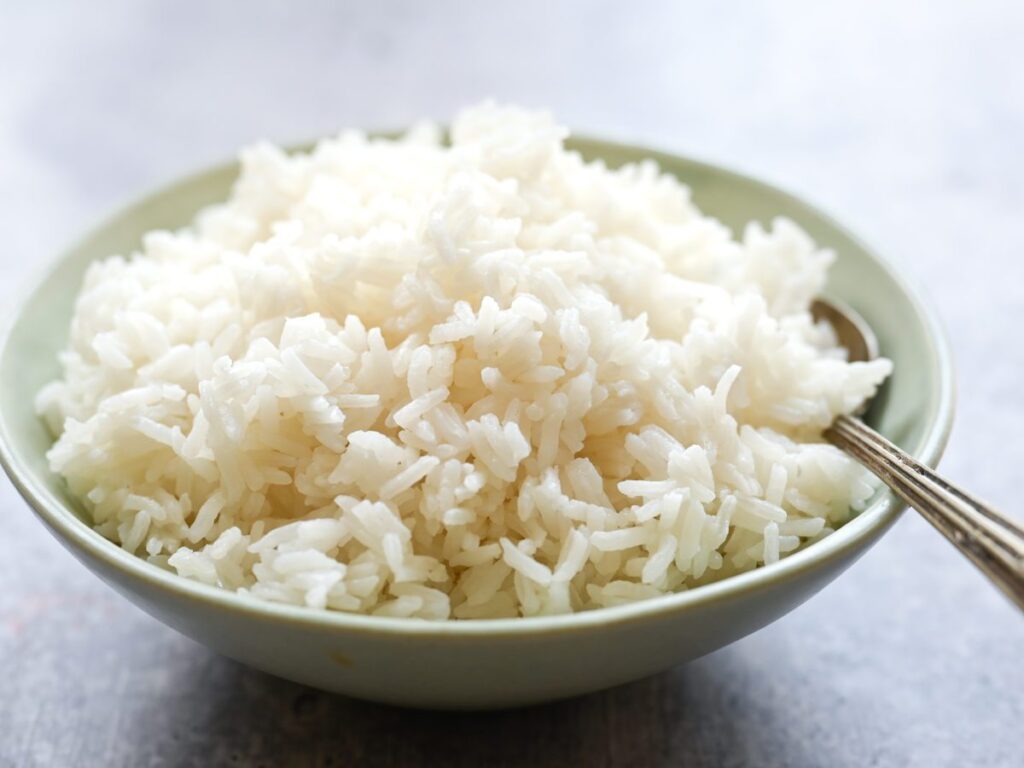
Jasmine rice and has been a staple in Thai cuisine for centuries. It is known for its exceptional taste and fragrance. As the rice matures, it absorbs the floral scent of the jasmine flower, resulting in a rice variety that not only pleases the palate but also delights the sense of smell. Its soft texture and slightly sticky consistency when cooked allow the grains to absorb flavors.
Beyond its culinary appeal, jasmine rice symbolizes prosperity and abundance. It is also nutritionally valuable, being a good source of carbohydrates, fiber, and B-vitamins, with a relatively low glycemic index. Jasmine rice is a beloved staple in Thai kitchens and an important part of Thai cuisine globally.
Knuckle Method for Measuring Water

When cooking Jasmine Rice, the knuckle method is a simple yet effective way to measure the water needed. First start by rinsing the rice in cold water until the water runs clear. This step helps to remove any impurities and excess starch. Place the rinsed rice in a pot or rice cooker. Place your index finger on top of the rice, so that your fingertip is just touching the surface of the rice. Add water until it reaches the first knuckle of your index finger.
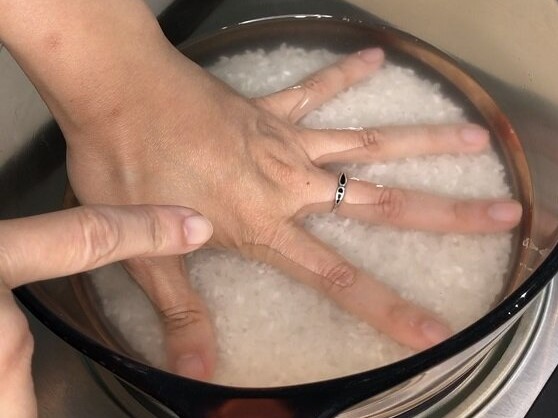
My mom used a variation of this method. She also used her hand to measure the water, but she laid her entire hand on top of the rice. Then added water until it just touched her second knuckles. This is the method I use today.
While modern measuring tools like measuring cups and scales have become widely available, many Thai cooks still prefer to rely on the knuckle method. This traditional method is not only accurate but also a testament to the wisdom and trust in traditional practices that have stood the test of time.
Stovetop Cooking
The traditional way of cooking jasmine rice in Thailand is on the stove top. Place the pot of rice and water on the stovetop over medium heat and bring it to a boil. Once it starts boiling, reduce the heat to low, cover the pot with a lid, and let it simmer for about 15-20 minutes. After that, turn off the heat and let the rice sit, covered, for an additional 5 minutes.
Rice Cooker
The rice cooker has gained popularity due to its convenience. Its sleek design, non-stick inner pot, and automated settings ensure perfect results every time. It also frees up space on your stovetop for other cooking. To cook jasmine rice using a rice cooker, add the rice and water to the rice cooker pot using the knuckle method. Close the lid of the rice cooker and select the appropriate setting for jasmine rice. The rice cooker will take care of the rest, automatically adjusting the cooking time and temperature to ensure perfectly cooked jasmine rice.
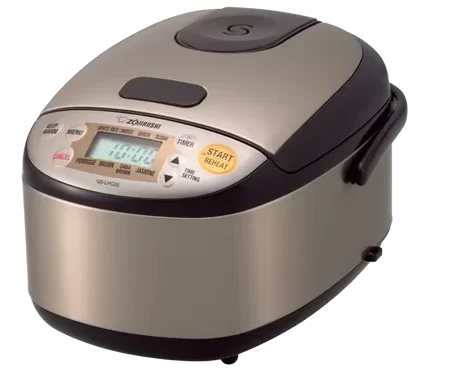
Rice cookers vary widely in size, features and price. Some upscale rice cookers such as the Zojirushi have an extended warming feature and can keep rice warm on your counter for days without drying out. No need to refrigerate or warm up later. In a household that enjoys Thai food daily, this feature is indispensable!
Microwave Cooking
Using a microwave is a hassle-free and fast way to cook jasmine rice. Add the rice and water to a microwave-safe bowl using the knuckle method to measure. Cover the bowl with a microwave-safe lid and cook on high power for about 10-12 minutes. This might take some experimentation since microwaves vary. Once done, let the rice sit for a few minutes before fluffing it with a fork.
Warming Rice
If you don’t have the luxury of a rice cooker that will keep your rice warm for days, the easiest way to warm jasmine rice without drying it out is to use a microwave. Place the desired amount of jasmine rice in a microwave-safe bowl and sprinkle a few drops of water over the rice to add moisture. Cover the bowl with a microwave-safe lid or microwave-safe plastic wrap, leaving a small vent for steam to escape. Then microwave the rice on medium heat for about 1-2 minutes, depending on the quantity. This will help warm it up evenly without drying it out. Once heated, let the rice sit in the microwave for another minute or two to allow the steam to distribute evenly. Carefully remove the bowl from the microwave and fluff the rice with a fork before serving.
Eating Jasmine Rice the Thai Way
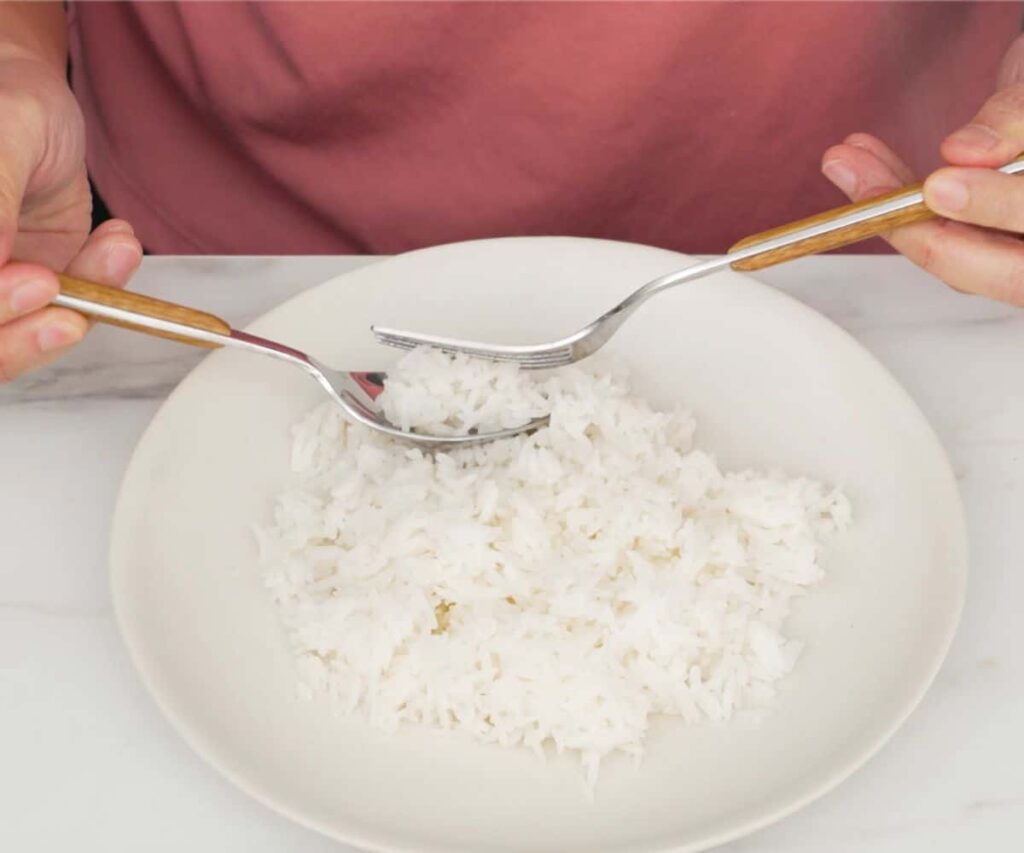
Using a fork and spoon is the traditional way of eating in Thai culture. Start by holding the spoon in your dominant hand and the fork in your non-dominant hand. Use the back of the fork to push a small amount of rice onto the spoon. Then use the spoon to transfer the food to your mouth. Unlike in Western countries, the fork never enters your mouth. A knife is not typically needed since Thai food it pre-cut into bite size pieces or is soft enough to cut with your spoon.
In Thailand, it is not customary to use chopsticks for eating rice. This is actually quite difficult and impractical. Chopsticks are typically only used for noodle dishes in Thailand
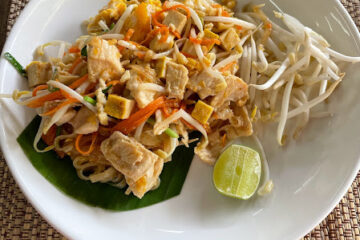


0 Comments